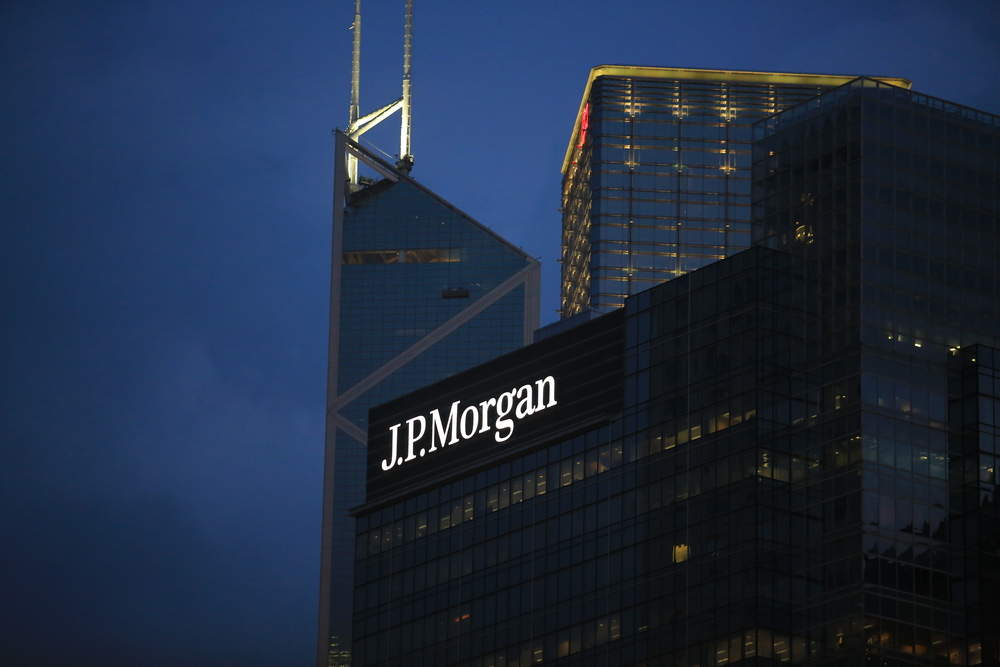In contrast with a number of its US rivals, JPMorgan Chase says it has escaped relatively unscathed from the current credit crunch.
Speaking at an investor conference in mid-November, JPMorgan Chases CEO, Jamie Dimon, gave a very upbeat assessment of his company and said the countrys third-largest banking group was looking to grow significantly all of its core businesses, including retail banking, credit cards, commercial banking and asset management.
Home loans expansion
In particular, JPMorgan Chase is looking to expand its home loans business at a time when a number of its rivals are restricting their mortgage lending in the face of the US subprime collapse.
We are still continuing to invest in mortgages. We think this is one of the great opportunities, Dimon said, adding that he did not believe Chases exposure to the mortgage subprime sector, at the root of recent write-downs for several rival banks, including Citi, Bank of America and HSBC, will become a major problem for the group.
We do not have any SIVs [special investment vehicles] that we sponsor so we think we are fine.
How well do you really know your competitors?
Access the most comprehensive Company Profiles on the market, powered by GlobalData. Save hours of research. Gain competitive edge.

Thank you!
Your download email will arrive shortly
Not ready to buy yet? Download a free sample
We are confident about the unique quality of our Company Profiles. However, we want you to make the most beneficial decision for your business, so we offer a free sample that you can download by submitting the below form
By GlobalDataWhile JPMorgan Chase had $2.5 billion in write-downs in the third quarter, Dimon said subprime lending will not go away because it remains a good business.
It was something good that went way to excess, he said. But remember subprime is minority groups, younger folks, immigrants, people who had problems earlier in their life. Theres nothing wrong with it. Its a good thing. A lot of [JPMorgan Chases] subprime mortgages are Chase subprime mortgages and are performing much better than average.
In the third quarter, Chases mortgage loan originations were up 35 percent to $39.2 billion compared with the same quarter last year, and, said Dimon, we can grow our mortgage market share. We like the business and our market share is up [but] if there is a recession, you may one day criticise us for doing it early. Mortgages sold in our branches are up 42 percent and it is a really great thing to build mortgages out of the branches.
Chases mortgage loan and home equity origination market share grew from 5.7 percent in the third quarter of 2006 to 9 percent in the third quarter this year, while overall market volume declined by 25 percent during the period.

ROE of 20 percent
JPMorgan Chase is targeting an annual average return on equity of 20 percent across the entire group. Regarding its investment banking unit specifically, Dimon admitted: In the good years we would look for 30 percent, and in the bad years, 10 percent. In the third quarter of 2007, JPMorgan Chase reported 6 percent, a quarter in which we might have expected 10 percent.
But with a good degree of bravado, he added that it did not really matter if the banks current strategic planning does not show a return until 2009 or beyond. He said that he is willing to make decisions now that do not necessarily have an immediate pay-off.
Looking ahead, if there is a recession in the US, Dimon said, he still believed that Chase can take advantage of the changed economic environment and grow the business. We will see charge-offs go up in cards and home equity, but we are in good shape.
Chases retail arm in the third quarter was, said Dimon, something of a tale of two cities. Non-interest revenue was up 38 percent but net income was down 14 percent for the quarter.
According to Dimon, the results so far reported by the branches acquired from Bank of New York (BoNY) were also highly encouraging. We changed the systems, introduced new products, retrofitted the branches [and] we are starting to see real effects, he said. Compared with the figures for 2005, new checking accounts per branch at former BoNY branches had doubled by the third quarter of this year, as had mortgage advances (see bar chart below).

Benign credit environment
Chases card division reported an increase in revenue of 6 percent for the quarter, at a time when, said Dimon, we cut back a little on certain zero transfer balances. Return on equity for the cards division was in the range we thought this business should be, at 20 to 25 percent, but we think that in this benign credit environment they should have been a little bit higher.
Chase will continue to target organic growth in its card division, in particular by promoting its customer loyalty programme cards linked to the banks rewards scheme increased from 64 percent of spend volume in 2003 to 80 percent for the last quarter.
It will also aim for a growth in its cards market share (currently 20 percent of the US market by outstanding balances see pie chart below) by focusing on the small business, affluent and mass affluent segments.
On 19 November, Chase announced the expansion of its Chase Clear & Simple card marketing and customer acquisition campaign. This time, the bank is eliminating the practice of increasing interest rates for individual cardholders when their credit bureau scores decline. This change is effective from 1 March 2008.
Chases Clear & Simple approach has been developed to make us easier to do business with, helping us to build lasting, loyal relationships between ourselves and our customers, said Gordon Smith, CEO of Chase Card Services, in a statement.

A background of gloomy predictions
In contrast to the news of job losses at a number of its rivals and against a background of gloomy predictions for 2008, Dimon finished his presentation by issuing a rallying call to any rival senior bank executives who are disillusioned with their current employer.
If any of you think youre good and youre looking for a job, feel free to give me a call, because we will be hiring, he said.
Such bullish sentiment comes at a time when even JPMorgan Chase itself has estimated that overall losses from collateralised debt obligations tied to subprime mortgages may climb to $260 billion. The figure is one of the highest estimates so far about the total losses facing the US and international banking community from the subprime mortgage fallout.
According to the data from Federal Deposit Insurance Corporation (FDIC), US bank earnings dropped 25 percent in the third quarter of this year, falling below $30 billion for the first time since 2003.
Loan loss provisions reached $16.6 billion, up 122 percent compared with the same period a year earlier. Nearly one-half of all US banks reported annual earnings declines, largely as the result of the weakening US housing market, the FDIC said.







